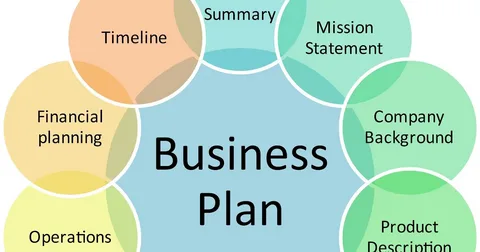In the constantly changing environment of business today, marketing strategies play a vital role in determining a company’s growth. For smaller businesses, limited resources and the necessity for agility frequently force to the adoption of particular marketing methods. One example can be that of the top-down marketing format strategy. This article focuses on the reasons that smaller businesses generally favor this approach and explores its advantages, challenges, and practical ways to use it.
Understanding Bottom-Up Marketing
What is Bottom-Up Marketing?
Bottom-up marketing is a method of marketing which focuses on grassroots efforts and focuses on coming up with suggestions and input from grassroots and the people closest to consumers. This differs from traditional top-down marketing that is where decisions are taken at the top level, with very little input from employees at lower levels or direct feedback from customers.
The Importance of Bottom-Up Budgeting
Budgeting bottom-up is a budgeting strategy that starts in the operation level in which management add figures for their respective departments. This strategy is especially beneficial for smaller businesses that have limited resources or marketing research capabilities. Through the use of insights from team members who are in direct contact with customers, businesses are able to come up with more effective marketing strategies.
Bottom-Up Budgeting in contrast to. Top-Down Budgeting
Understanding the distinctions between top-down and bottom-up budgeting is crucial for understanding the reasons why smaller companies choose the latter.
Bottom-Up Budgeting
- Input from all levels: Employees at various levels are involved in the budgeting process and ensure the perspectives of all employees are taken into consideration.
- Realistic Estimates Ground-level knowledge leads to more accurate and real budget estimates that reflect the real-time operational requirements.
- Flexible: This approach allows for changes according to real-time information and current market trends.
Top-Down Budgeting
- executive decisions: The budgets set are made by the top management, with little involvement from employees at lower levels.
- Low Accuracy: This can lead to budget allocations that are unrealistic and don’t accurately reflect operating needs.
- rigidity After being set, budgets that are top-down can be hard to modify, making them less responsive to changes in market conditions.
The Role of Marketers in Bottom-Up Marketing
In the bottom-up marketing structure, different actors play an important role:
- Producers: They deliver insights into the capabilities of production and the product features that are popular with customers.
- Intermediaries Retailers and distributors give valuable information about the market and consumer trends.
- Government and Institutions: Regulatory insights can affect marketing strategies, specifically for sectors that must comply with regulations.
In engaging these groups smaller businesses can develop an effective and comprehensive marketing strategy.
Benefits of Bottom-Up Marketing for Smaller Companies
Smaller businesses can procure significantly from implementing an approach that is bottom-up marketing strategy:
1. Enhanced Customer Insights
Involving employees in interactions in direct contact with their customers companies are able to acquire valuable information about customer preferences and behavior.
2. Increased Employee Engagement
If employees feel that their input is appreciated, it promotes an attitude of belonging and involvement and can result in greater productivity and morale.
3. Cost-Effective Strategies
Bottom-up marketing typically requires less funds than conventional methods which makes it a great choice for budgets with smaller amounts.
4. Agility in Choice-Making
This strategy allows companies to respond quickly to changes in the market, since they constantly receive feedback from their front-line employees.
Challenges in Implementing Bottom-Up Marketing
Although there are numerous benefits small businesses may encounter challenges when it comes to bottom-up marketing:
1. Coordination Issues
The gathering of input from different levels can create coordination challenges particularly when the organization isn’t organized to support this.
2. Overwhelm of Feedback
A lot of feedback can be too overwhelming, making it hard to extract actionable information from the chaos.
3. Resistance to Change
Certain employees may resist new procedures or feel that their contributions are not appreciated and can hamper the effectiveness of a strategy.
Case Studies: Successful Bottom-Up Marketing Examples
Example 1: Coca-Cola
Coca-Cola’s “Freestyle” vending machines exemplify bottom-up marketing. The company sought feedback from consumers to design a machine that lets customers mix their drinks directly, in response to demand from consumers for personalization.
Example 2: LEGO
LEGO launched its “LEGO Ideas” platform, where users can submit designs. The most successful designs are then turned into products which allows LEGO to harness the imagination of its customer base.
Conclusion
In the end it is clear that it is clear that the bottom-up marketing strategy provides smaller businesses with an advantage over their competitors in the present competitive landscape. Utilizing the insights of the employees and their stakeholders and stakeholders, these businesses can design more efficient and agile marketing strategies.
Understanding the intricacies the nuances the nuances of bottom-up planning and the roles of marketing professionals, and the benefits that this strategy can bring can help small businesses prosper. In spite of challenges that could be encountered however, the potential for better customer insight as well as increased employee engagement and cost-effective strategies make bottom-up marketing an attractive option for small-sized businesses.
When businesses change and evolve to change, adopting a bottom-up strategy will encourage innovation and ensure the success of an ever-changing market. If you’re a small-scale business trying to develop the effectiveness of your marketing strategy, you should consider using a bottom-up strategy to tap into the collective wisdom of your team to better serve the demands of your clients.
Frequently Asked Questions
Bottom-up budgeting is based on input from all levels of the company, which outcome in more accurate estimates and flexibility. Contrarily top-down budgeting is governed by top-level executives who have little input from the lower levels, resulting in lower-quality allocations.
Fit for market and product is when the product is able to meet the requirements of its intended market. Bottom-up marketing assists in identifying these needs by getting direct feedback from customers and ensures that the product is in line with the market’s demands.
Intermediaries, like retailers and distributors give insight into the preferences of consumers and trends in the market, which can help create the development of a more efficient top-down marketing strategy.
Integrative marketing communication is an technique which combines a variety of marketing strategies to impart an unifying messages across different channels. While bottom-up marketing could be a factor in the strategies employed, this generally concentrates on the input of the community.
The network marketing also known as multi-level marketing (MLM) opportunities typically require the recruitment of marketers to join teams and leveraging their networks to advertise goods or products.



